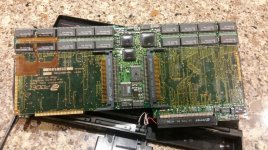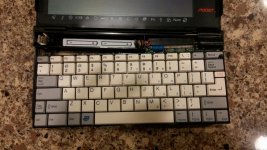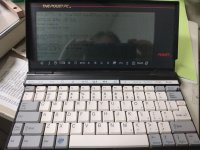Parity's more than just about RAM replacement, it's about failure detection, though. If you don't know a bit was flipped, your data can be corrupted without you ever knowing. Especially back then, with RAM reliability not being so hot...
It's not about RAM replacement at all in these units. And yes, I do know about this stuff. I was repairing motherboards, power supplies, hard drives, etc, to component level back when this thing was new. My point was that having parity bits on SMD static RAM in a welded together unit is pretty pointless because you can't easily replace the RAM. Parity with DIPs, SIMMs, DIMMs, etc does give you an early warning and you can then fix it. Here you can't do anything about it, and a POST RAM check, or diag app would tell you quickly enough that the RAM (and, effectively, the whole unit) is bad. Adding the parity gives you the slightly earlier warning while also giving you a 12.5% higher likelihood of failure (since there are now 1/8th more RAM chips that might fail. They might as well have saved the money, power, and real estate.
Now, if they had had a way to map out bad bytes, or chips, and use the extra ones as hot spares, that would be a different story.... but I kind of doubt that for this age of a unit.
On the other hand, as I was writing this, I remembered that:
A) There was a variant called the Poqet PC Prime that had 640K - this one, however, has the P/N of the 512K Classic, not the 640K Prime.
and
B) Besides the main memory, there was also a 22K RAM drive. I don't see other obvious RAM on the board. I was thinking that the 834000A-20 might be SRAM, but it's actually 512KB of ROM. So, it seems likely that that 22K is coming out of the additional 64K provided by the two "extra" 32Kx8's. The rest must be some sort of working memory... maybe the video bitmap space.



